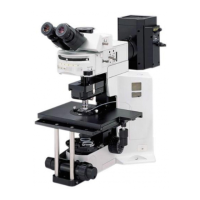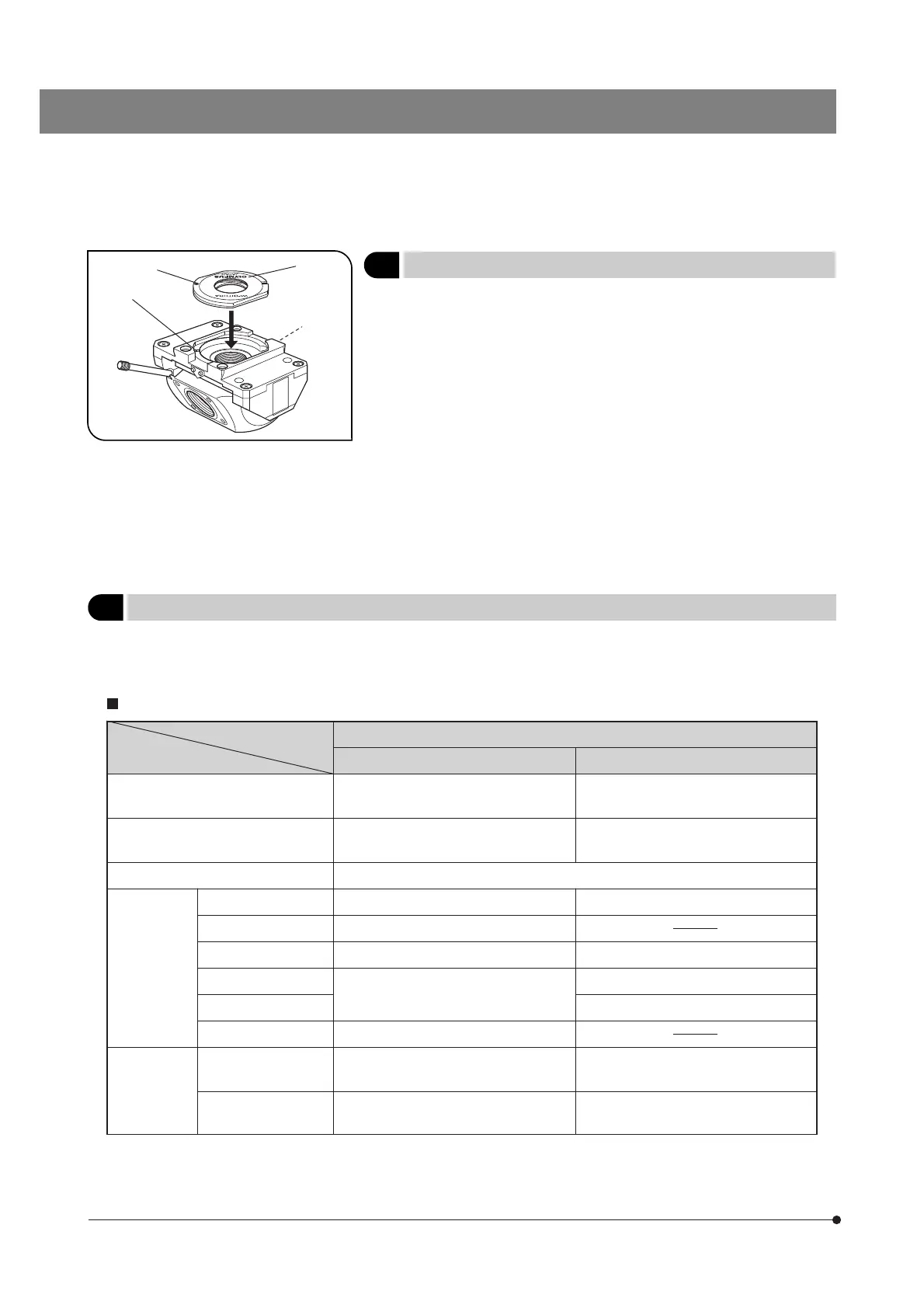20
Fig. 31
3
Attaching the DIC Prisms (for Revolving Nosepiece)
(Fig. 31)
}The DIC prisms for use in the revolving nosepiece include the WI-DICTHRA2
(high-resolution type) and WI-DICT2 (middle-contrast type). The revolving
nosepieces in which a DIC prism can be inserted are the WI-SRE3 and
WI-SNPXLU2.
The DIC prisms (WI-DICT or WI-DICTHRA) cannot be attached to the re-
volving nosepieces (WI-SRE3 or WI-SNPXLU2) because of their shapes
and sizes.
1. Remove the revolving nosepiece from the revolving arm.
Sufficiently loosen the drop prevention screw @ with a Phillips precision
screwdriver.
2. Hold a DIC prism ² with the side with indications facing up, and insert in
by aligning the positioning pin ³ with the groove | on the revolving
nosepiece.
After the insertion, fully tighten the drop prevention screw @.
3. Attach the revolving nosepiece onto the revolving arm.
Binocular observation
(Surface layer only)
@
²
³
|
4 Attaching the DIC Prisms (for Condenser)
(Figs. 32-35)
}DIC prisms can be inserted in three types of condensers including the WI-UCD, WI-DICD and U-UCD8*.
* Do not use the U-UCDTP530 one-wave plate for the U-UCD8 but use the exclusive WI-TP137 quarter-wave plate.
Shearing Amount
Small (High resolution) Medium (Middle contrast)
Condenser
WI-UCD
WI-DICD
U-UCD8
(with WI-TP137)*
DIC prism
(for revolving nosepiece)
WI-DICTHRA2 WI-DICT2
Objective
Magnification
10X WI-DIC10HR (small) U-DIC10
20X WI-DIC20HR (small)
40X WI-DIC40HR (large) U-DIC40
60X U-DIC60
WI-DIC60HR (large)
100X U-DIC100
XLU20X **U-LDPXLU20HR (large)
Application
CCD observation
(Surface to deep)
Observation of relatively shallow area
(0 to 100 μm)
Observation of relatively deep area
(50 to 150 μm)
Optimum for surface layer observation.
Less suitable for surface layer observa-
tion than the high-resolution type.
DIC prism (for condenser)
List of DIC System Combinations
**The actual view is equivalent to the middle-contrast type because of lower magnification and higher NA than usual.

